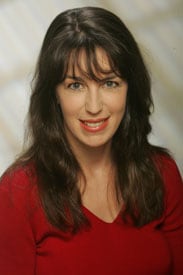MTNA Presentation, 'Transcending Geography,' Showcases Yamaha Disklavier 'Remote Lesson'
 On Remote Lesson, Dr. Jennifer Snow comments: "It doesn't replace excellent teaching; it facilitates it. This is going to be the norm sooner than we imagine." |
Lee, who studied with Snow while completing her undergraduate degree at UCLA and is now a first year master's student at the Peabody School of Music, was experiencing the "Remote Lesson" for the first time, and calls the interaction with her teacher "mind blowing. When the pedals started moving on their own, and when I heard and saw the different tones and touches, well, I definitely wasn't expecting that kind of range and sophistication."
The 22-year old pianist also says, "Since professors travel so frequently these days, the ability to have lessons like this will be essential in the future. As musicians, we will be able keep in touch and connect with video conferencing, connect with our pianos, to have a lesson or even just play for each other. I think this technology is pretty incredible."
Snow first encountered the Disklavier's "Remote Lesson" capability in 2004, when she participated in a project with Acadia University in Nova Scotia and the Royal Conservatory of Music (RCM) in Toronto. "The first time I experienced it, I went crazy for it. It was the most exciting thing I'd ever seen. It doesn't replace excellent teaching; it facilitates it. This is going to be the norm sooner than we imagine."
"From a teaching perspective, it's fascinating," she continues, "especially in teaching pre-college age students. It's normal for them -- they'll high-five you on the video screen! Using "Remote Lesson" really challenges me to think about how I teach, to think about how I use my non-verbal cues, and it drives increased creativity, sound modeling and critical listening skills. With the playback capability, you can see and hear everything about the physicality of playing, and from a sound perspective that's critical, because we teach from sound."
Her presentation at MTNA was less about the technology itself and more about how the technology is changing the face of how musicians interact with each other. "Before the demonstration, I talked about technology and fears about it, why people aren't always open to it. It was a mixed audience, but most participants were young and video conferencing is already somewhat normal for them; it's the way they interact. There's a saying about technology 'if it was developed before you were born, it's not technology.'"
"Looking at the big picture is awesome because this technology transcends boundaries," Snow adds. "I see applications not only one-to-one (teacher to student) but also peer-to-peer and group-to-group. Students will have access to teachers and mentors worldwide. In the not so distant future, when this is really rockin' and rollin', "Remote Lesson" will allow students to take lessons with anyone they want. The possibilities are unbelievable. This technology is so immediate, so one-click friendly. You don't have to have 45 technologists to use it or do it. My live teaching demo at MTNA got everyone so excited. As teachers, we tend to be isolated; it's the nature of the profession. But this is multi-faceted, and we're only at the tip of the iceberg with it."
Snow will offer another "Remote Lesson" demonstration at the College Music Society conference in Utah in November. Previous recent presentations by Yamaha have included a series of premier presentations at the Winter 2007 NAMM Show (featuring teachers and students located on the showroom floor in Anaheim, California, and at the Yamaha Artist Services facility in New York City), and an October 2006 demonstration at the World Piano Pedagogy Conference held in Atlanta.
While not included in the Disklavier's new 2.0 software upgrade, the company expects to include the "Remote Lesson" feature in future product updates.
Yamaha's continual innovation of the Disklavier has led to two industry firsts. The instrument has been honored for the sixth consecutive year with Musical Merchandise Review Magazine's "Dealer's Choice Award" as "Product of the Year." The Disklavier also won the Music Teachers National Association's (MTNA) Frances Clark Keyboard Pedagogy Award for 2006. Typically awarded to educators, this marks the first time a music product has received the MTNA honor.
For more information, write Yamaha Corporation of America, P.O. Box 6600, Buena Park, CA 90622, telephone (714) 522-9011, or e-mail infostation@yamaha.com.
